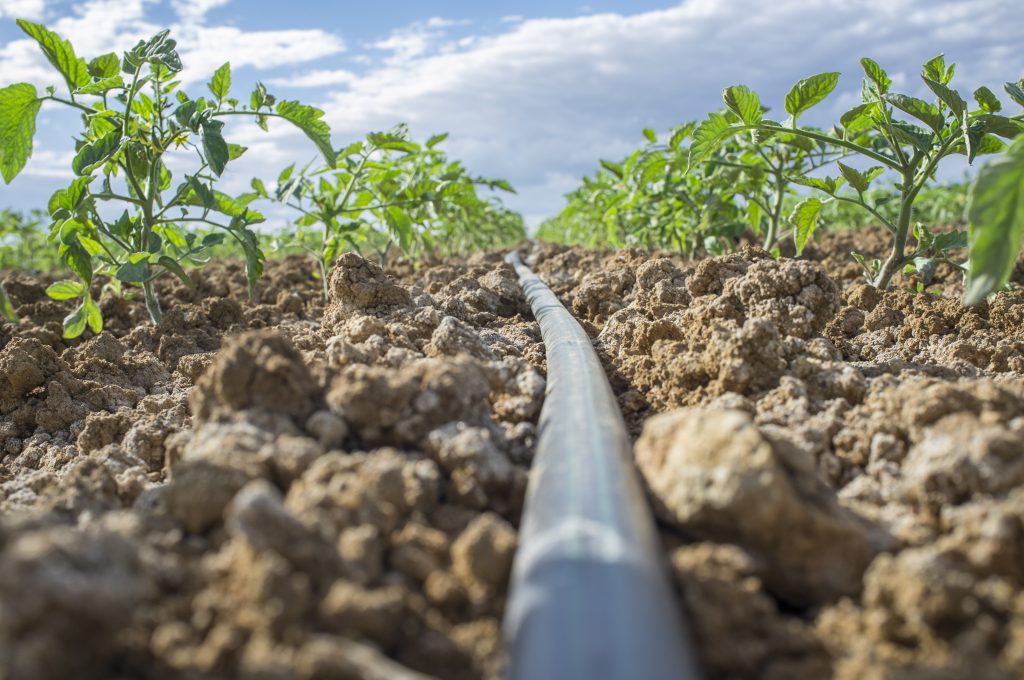
Drip irrigation vs. overhead irrigation? That truly is the question for vegetable and specialty crop producers in Alabama who are poised to produce a crop in 2021.
Eric Schavey, Regional Extension agent in Northeast Alabama, advises producers to choose drip irrigation. It is more efficient in delivering water to the plant roots.
“As far as a production standpoint, the drip irrigation is more efficient. You’re actually putting the water where it needs to be,” Schavey said. “Drip irrigation puts it there at the plant where it can go into the ground where the roots can take it up. You don’t get any of that splash from an overhead droplet like you get during a rain. If we have any fungus or anything that is on our soil surface and it splashes up, it gets on the lower leaves, especially tomatoes.
“When you’re looking at early blight (disease), it’s naturally in our soil. When we get rainfall or overhead irrigation it splashes up and starts on the bottom leaves first and moves its way up the plant.”
Water Lost Using Overhead Irrigation
There is also a misconception that if farmers are using overhead irrigation, all of that water is getting to to the plants. However, much of that water evaporates before hitting the soil.
“Depending on how our weather has been, you take a July day here in Alabama, 90 degrees and you go to water and that air is dry with overhead, you’re probably losing 40% of it, at least,” Schavey said. “And it’s not on target. I know water is cheap. In Alabama, we have an abundance of water, but we’re two weeks away from a drought at any time.”
Why is Drip Irrigation so Efficient?
Sub-surface drip irrigation is primarily used for vegetable production. Most commercial farmers grow vegetables on a plastic covering that lies above the drip irrigation system. The water is applied directly to the plants’ roots. It is thereby more efficient.
“Once it starts dripping, that emitter or that drip tape is dripping it out right on that soil surface, then it actually fans out in a ‘V’ in that soil column. It’s really narrow to the plant at first and then widens out,” Schavey said. “It’s good, because you want those roots going deeper. If you’ve got a triangle and it’s inverted down in the ground, those roots that ran left and right, they’re going to run down to that water and you’re going to have a deeper root system.”









